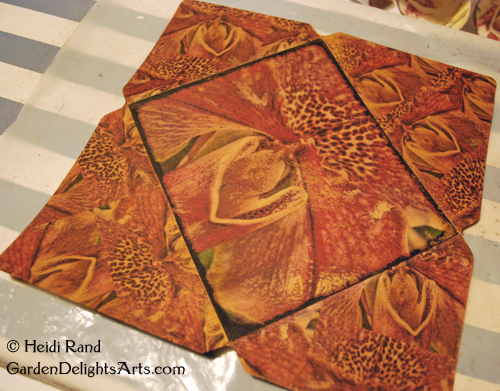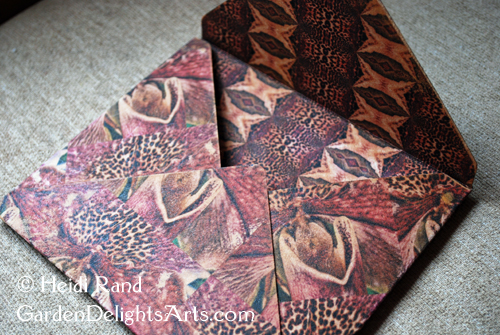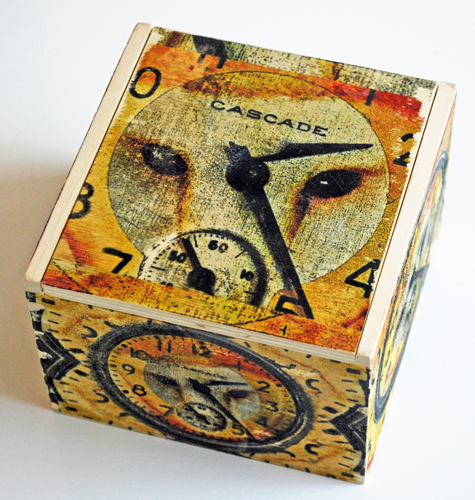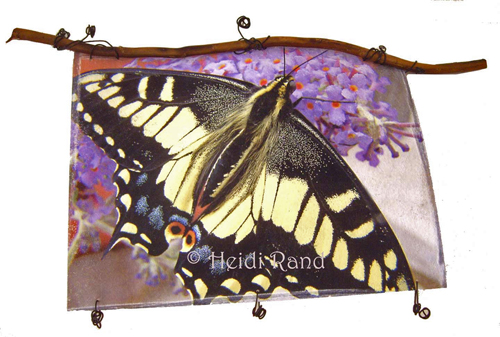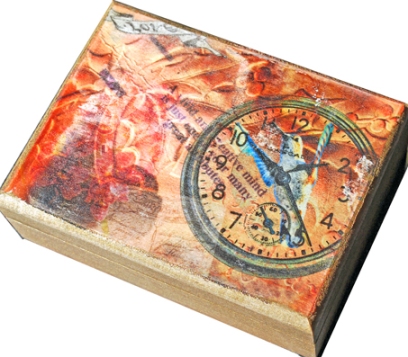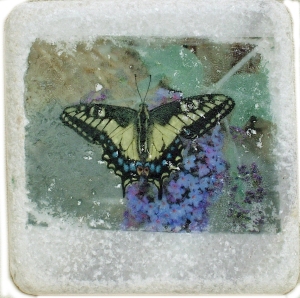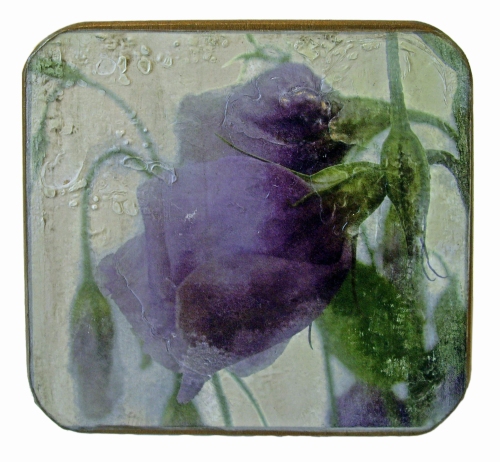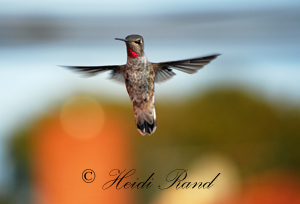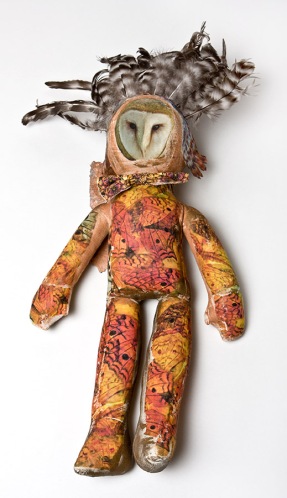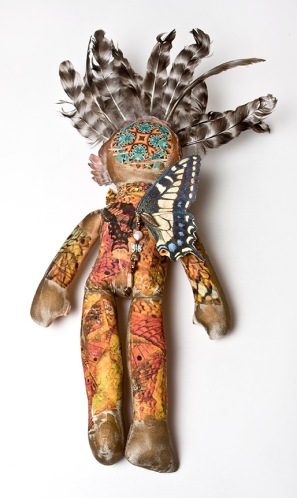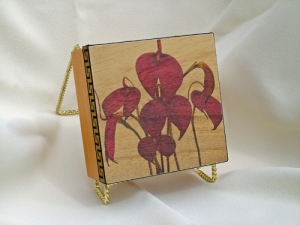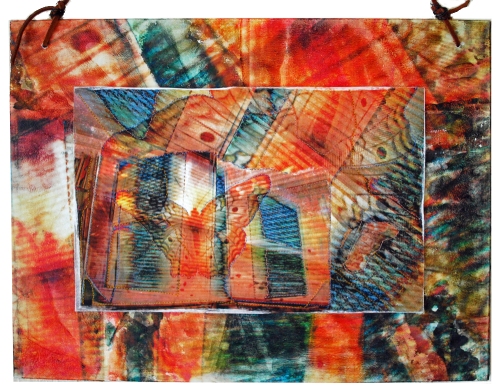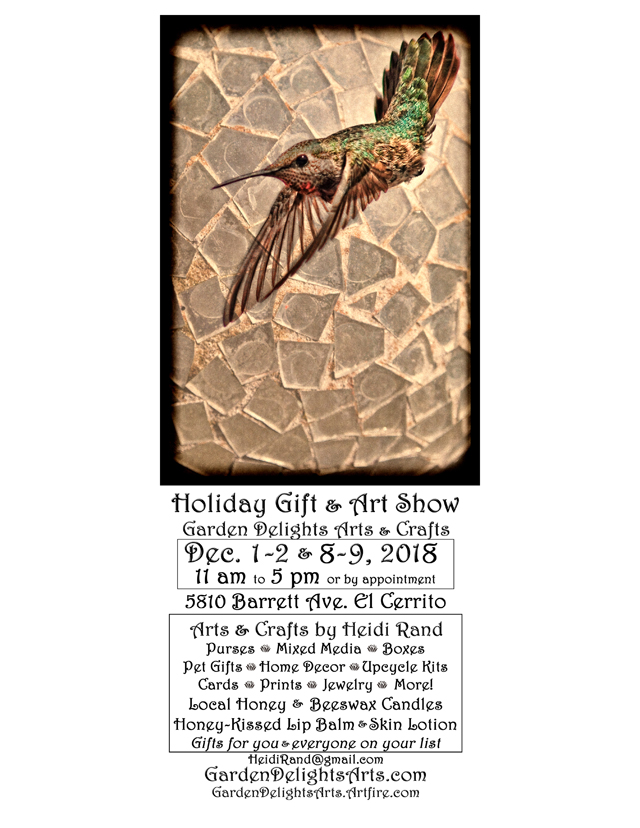 My yearly gala, the Garden Delights Holiday Gift Sale & Art Show, will be the first two weekends of December, so please save the date! If you want a postcard reminder sent to your mailbox email me your address.
My yearly gala, the Garden Delights Holiday Gift Sale & Art Show, will be the first two weekends of December, so please save the date! If you want a postcard reminder sent to your mailbox email me your address.
The Show is at my art studio on December 1-2 and 8-9, from 11 am to 5 pm (or by appointment).
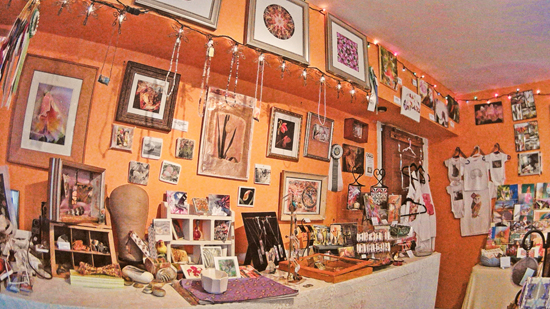
I’m so proud to show off my new photos, designs, and mixed-media artwork and crafts, and just as excited about my upcycled creations, where I bring fresh life to paper and fabric destined for landfill.
Come see my handmade bracelet cuffs, purses, phone and e-reader holders, all from fabric books and silk neckties; and envelopes and other paper crafts I make from outdated calendars and books. I’ve also been busy assembling kits and supplies for paper and fabric artists and crafters, ideal as a gift for yourself or for anyone who loves to create mixed-media, collage, book, and mail art.
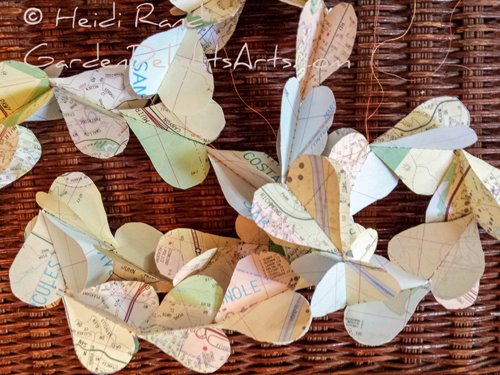
Stop in to relax during the holiday rush, enjoy snacks, and chat. Never any pressure to buy, but if you’ve got a list you’ll find a wide range of handmade and original-designed gifts (for yourself and for friends and family – including pets), at all different prices.
Jewelry, wearable art, purses, cards and prints, boxes, home decor, books, beeswax candles, and more! Our honeybees blessed us with a great harvest of delicious honey, which many people swear help their pollen allergies.
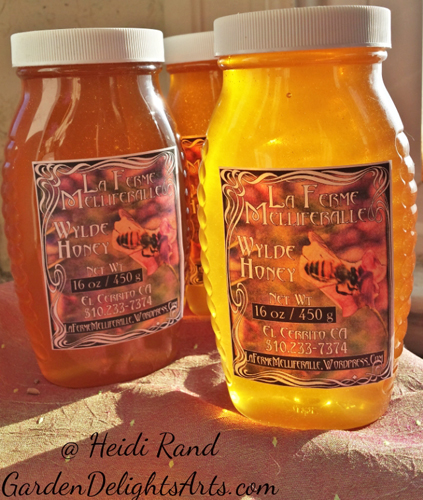 And a new batch of soap – plus Honey Kissed lotion and lip balm, handcrafted by George from our honey and wax!
And a new batch of soap – plus Honey Kissed lotion and lip balm, handcrafted by George from our honey and wax!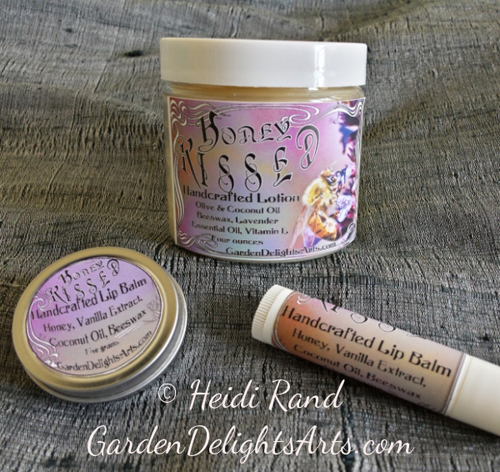
Can’t make the show or want to see my artwork online? Click these links:

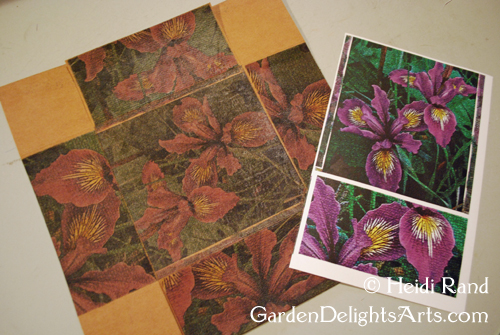
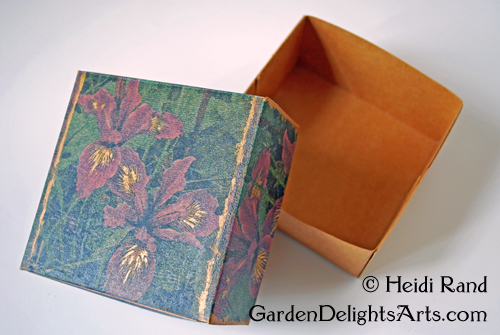

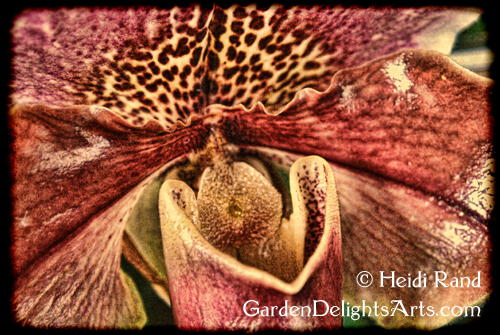
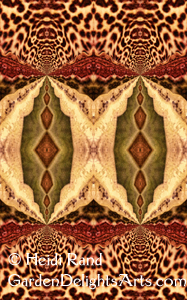
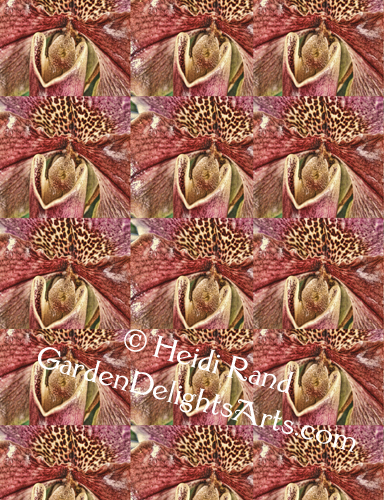 Finally it was time to transfer! TAP works best at the highest iron setting that the surface you’re ironing onto can withstand, so I set it on linen. Taking the front piece first, I cut out closely around the image, placed it face down onto the kraft•tex, covered it with parchment paper to protect the iron, and slowly circled around the entire piece with the iron.
Finally it was time to transfer! TAP works best at the highest iron setting that the surface you’re ironing onto can withstand, so I set it on linen. Taking the front piece first, I cut out closely around the image, placed it face down onto the kraft•tex, covered it with parchment paper to protect the iron, and slowly circled around the entire piece with the iron.

